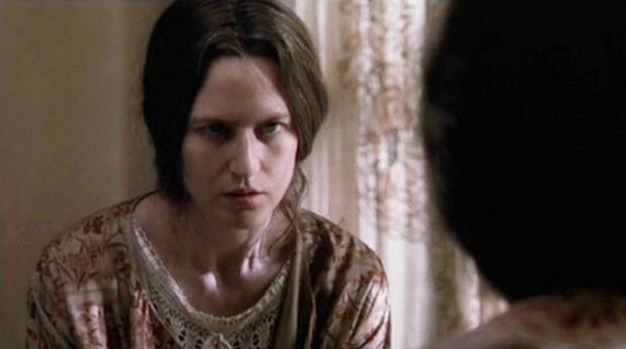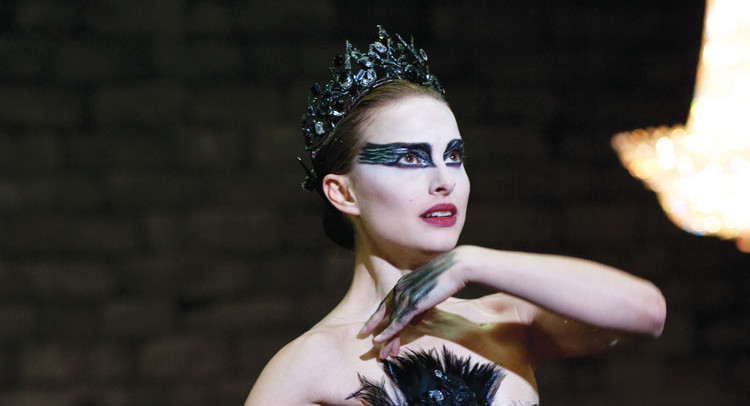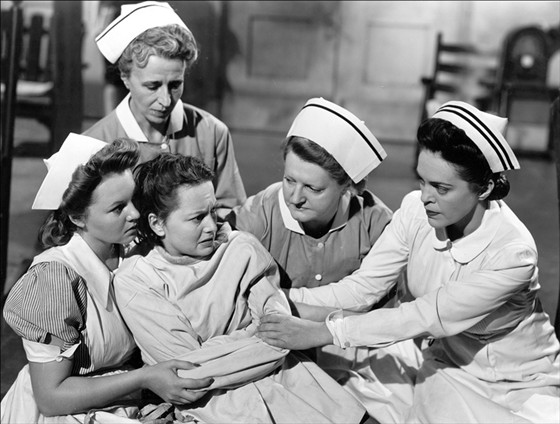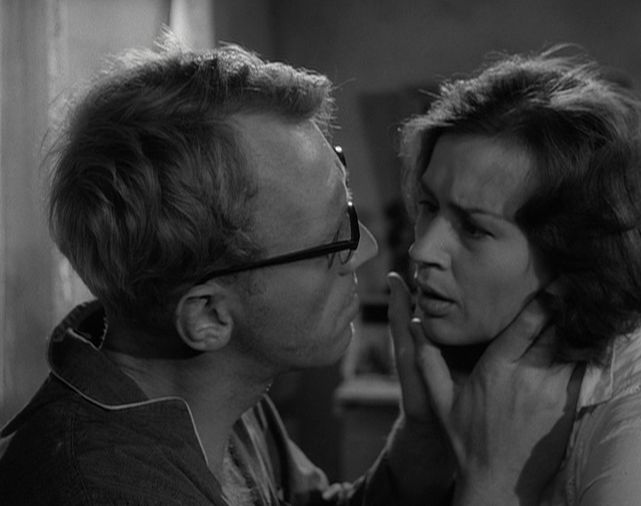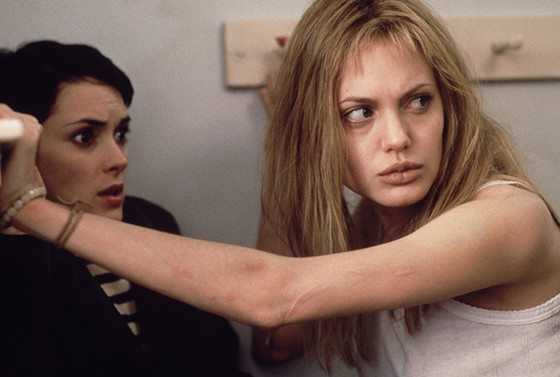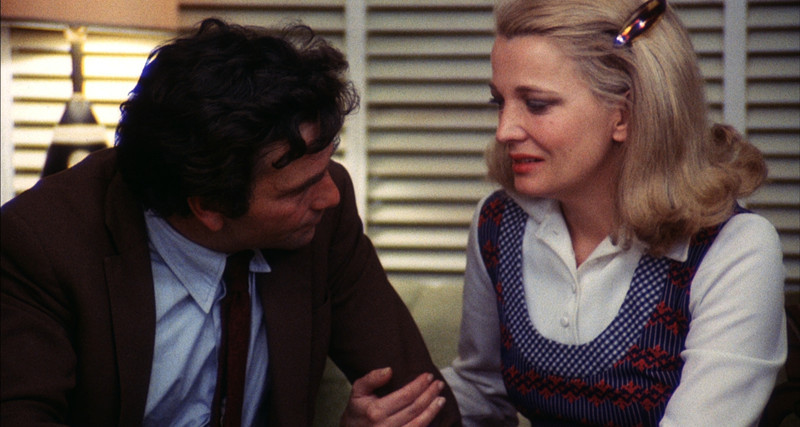8. The Hours (2002) Dir. Stephen Daldry
Nicole Kidman plays pre-feminism but undeniably feminist heavyweight Virginia Wolf. A prominent literary figure (and rumored bisexual). It is no secret that Wolf suffered from severe depression.The illness would eventually lead her to take her own life by filling her pockets with stones before walking into the Thames.
In a different storyline, we see Julianne Moore, in a supremely effective performance as a suffocated and exceedingly unhappy housewife Laura. Her husband loves her (John C. Reilly, who had a trend of playing oblivious, jilted husbands in the early 2000s), but their marriage lacks passion. In fact, it is suggested that Laura may have some homosexual tendencies of her own.
Tragically, Moore is detached from her young son, who desperately desires her affection but at the same time seems privy to her inadequacies; everything she does is forced. Eventually, she attempts suicide in a rented hotel room where her depression is represented quite literally in a demonstrative fantasy sequence in which the room fills up with water.
This echos Woolf’s own suicide and reinforces the feeling of drowning and asphyxiation that often comes with clinical depression.
7. Safe (1995) Dir. Todd Haynes
Perhaps more than any of the others, Todd Haynes’ surreal tale of suburban dysphoria causes one to question mental illness in terms of its tangibility by bringing physical and mental symptoms together in an unsettling and unanticipated way.
Much in the way of a David Lynch film, Safe, despite the irony of its title, opens with a mood of acute uneasiness. When we first see Carol (Julianne Moore), a meek, wealthy LA housewife, she is having detached, obviously unsatisfactory sex with her husband. She maintains a lifestyle filled with the frivolities of upper class privilege, but her relationships and daily routine are vacuous.
One day, seemingly without logical reason, she develops disruptive symptoms such as bloody noses, vomiting and shortness or breath; all of which are medically innocuous upon investigation. Eventually she is diagnosed with multiple chemical sensitivity.
A real but inexplicable disease in which it is believed that symptoms occur in reaction to chemicals in household products. Also know as the 20th Century Disease, the diagnosis of MCS is very controversial as many medical professionals believe underlying psychological issues are the true source of the problem. That being said, it’s likely Haynes used MCS as a metaphor for suburban suffocation and the disaffect of living in the 20th century.
The movie is hard to watch and exceedingly anxiety inducing. Haynes creates an isolating atmosphere by placing Moore in the center of shots, her body seemingly minimalized by the scale of her surroundings (such as her luxurious but cavernous home). Furthermore Haynes employs an ambient, foreboding score which looms over the scenes, creating suffocating impression on the watcher.
6. Black Swan (2010) Dir. Darren Aronofsky
Darren Aronofsky’s 2010 thriller really presents a hotbed of psychological issue. Natalie Portman’s character exhibits symptoms of obsessive compulsive disorder, schizophrenic delusions and paranoia as well as a spectrum of eating disorders.
The film says a lot about pursuing craft as an artist, and the difficulty of achieving true transcendence during a performance (something all performers strive for). Nina, however is trapped by her desire for control and perfection. She is unable to let go.
Aronofsky initially envisioned the story as a modern take on Fyodor Dostoyevsky’s story, “The Double,” another story of two foils. The double in this case is Lily, who is direct foil to Nina’s rigidity. Whereas Nina is repressed, Lily is sexually assertive. She is carefree, she experiments with drugs and most importantly, she is able to let go during performance.
The film says a lot about how far a person will go for their art. As Nina descends further into madness, she also unlocks the suppressed aspects of her personality and in doing such is able to achieve “perfection.” Unfortunately for Nina, perfection comes at a high price…
5. Melancholia (2011) Dir. Lars von Trier
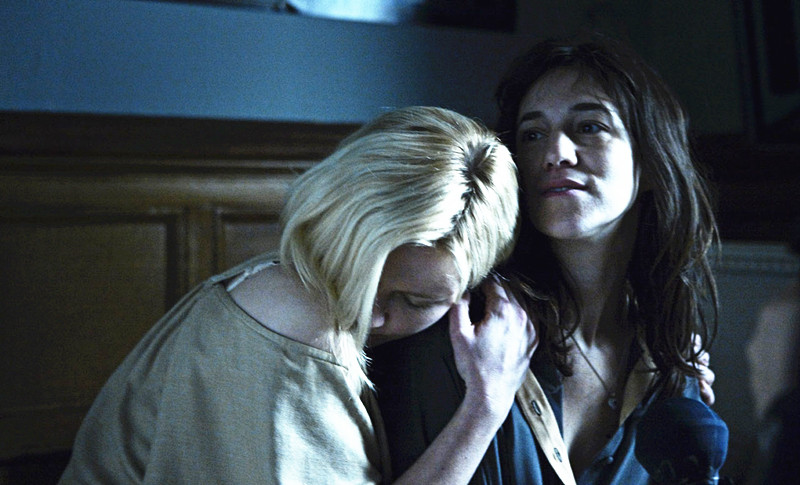
Depression is a term often thrown around. People will frequently exclaim, “I’m so depressed,” to express sadness or dissatisfaction with a situation.
However, true clinical depression is a whole different animal. Imperceptible and painful, perhaps its most acute symptom is the numbness. The overwhelming and all encompassing numbness that takes away all meaning and compromises the will to exist,
Love him or hate him, it is an indisputable fact that the films of Lars von Trier stir up powerful emotions, sometimes to the point of being triggering. Von Trier wrote his picturesque, apocalyptic opus, Melancholia as an illustration of his own experience with depression and of its symptomatic detachment.
Justine (Kirsten Dunst) is clearly suffering from the like and continues so with varying degrees of severity throughout the film. She is disengaged, self destructive and she suffers from fatigue.
In the second act of the film, we become aware that a rogue planet, Melancholia, is approaching the Earth with the potential of collision. Unlike Her sister Clare (Charlotte Gainsbourg) who is anxious over the prospect, Justine is complacent, calm and ironically, the newly empowered.
This was easily the best performance of Dunst’s career, and she was robbed of an Oscar nomination. Her range is showcased as she exercises the difficulty of emotional restraint and its eventual release.
4. The Snake Pit (1948) Dir. Anatole Litvak
Most people know Olivia de Havilland as the lovely (not to mention remarkably tolerant) Mellie from “Gone With The Wind”. While that is easily the performance for which she will best be remembered, with her knit eyebrows and the actress displays her multi-faceted talent in the 1948 potboiler “The Snake Pit.”
Based on Mary Jane Ward’s semi-autobiographical 1946 novel, the story follows Virginia Cunningham, a woman who wakes up in a mental hospital and is unable to remember the last several years of her life. Which, as it turns out, was spent in and out of various wards and hospitals.
Eventually, through talk therapy, it is revealed that all of her troubles were traced back to one traumatic event during her childhood. A somewhat antiquated element of the even more antiquated armchair psychology, but nevertheless, a satisfying conclusion is drawn to a fascinating story.
The film provides a sensational look into the grimier elements of asylums in the early 20th century. At the same time however, it never becomes so grim that it loses Hollywood flair associated with the studio days.
3. Through a Glass Darkly (1961) Dir. Ingmar Bergman
It’s easy to distinguish a Bergman film from any other black and white movies. All of his films are marked by a characteristic, looming atmosphere; moody, pensive and very austere. Bergman was highly influenced by the work of existential pioneer Soren Kierkegaard, so his movies have a considerable amount of philosophical heft.
Taking place over a 24 hour period, the story is a microcosm plot. David, a self absorbed, struggling novelist enveloped in an existential crisis, vacations on a remote island with his son in law, Martin and his two children; the adolescent Minus and the mentally ill Karin, who has just been released from the asylum.
Though it is not explicitly specified, Karin is quite obviously suffering from schizophrenia. She frequently ventures up to the cottage attic where she believes God is hiding behind the wallpaper. Her episodes are unnerving. She exhibits some elements of a classic hysteric in her mania; a subtle erotic charge which later manifests in the wrong place.
In general her behavior is manic and unnerving. Eventually, she suffers an extreme relapse (tackled with spectacular realism by Swedish actress Harriet Anderson).
2. Girl, Interrupted (1999) Dir. James Mangold
A ladies’ answer to One Flew Over the Cuckoo’s Nest. Angeline Jolie’s magnetic performance as the entrancing, sociopathic Lisa is certainly comparable to the wild energy of Jack Nicholson, but she is still electric in her own right.
Based on the memoir by Susana Kayson, the story follows Susanna’s (Winona Ryder) experience in a mental institution after high school during the late 1960’s.
The casting of the film is flawless. Not only did it skyrocket the career of Angelina Jolie, but it also features stunning performances by Woopie Goldberg, Elizabeth Moss and Brittany Murphy. Winona Ryder anchors the film with her characteristic cool girl appeal, loveliness and authenticity.
Every girl should see this film. It says a lot about growing up and tolerance. A woman’s mental ward is rife with angst, and the movie demonstrates how maturity leads to unforeseen clarity.
1. A Woman Under The Influence (1974) Dir. John Cassavetes
Often referred to as the grandfather of independent cinema, John Cassavetes wrote, directed and self-financed many of his films. He was one of the first directors to implement improvisation over script and was a front-runner of cinéma vérité. Modern Cinema owes a lot to Cassavetes. But for some reason his movies are only seen by film students and self- proclaimed buffs.
When Cassavetes married Gena Rowlands in 1954, they became one of the greatest power couples in film history. One of their best collaborations was the 1974 film “A Woman Under the Influence.” It was a true labor of love considering Cassavetes mortgaged his house in order to have it made. In the end, it was worth it as the film turned out to be something of a masterpiece.
The film really allowed Rowlands to display her chops. Her performance is difficult to describe; unhinged, loving, utterly unpredictable and frequently uncomfortable to watch.
Rowlands plays contemporary housewife Mabel. She loves her husband, Nick, a construction worker (played with excellence by Peter Falk), as well as her children, but it is immediately apparent that the family dynamic is off. Mabel exhibits odd, erratic behavior. It is difficult to categorize what exactly the issue is and no diagnosis is explicitly stated after she is admitted to an asylum later in the film.
During the time of Mabel’s confinement, it becomes apparent that Nick is not necessarily a better or saner parent as he also shows unstable behavior (such as giving one of his young children a beer). No doubt gender roles play a part in society’s perception of madness, hence why Mabel was institutionalized as opposed to Nick.
It is obvious that Mabel desperately wants to please her husband, but she undoubtedly has difficulty filling the role of a housewife. Nevertheless, in the end, one is left to question who is really the crazy one and the very definition of insanity itself.
Author Bio: Torie Gehrig lives in Chicago. She has been a film buff since childhood and hopes to make one of her own one day.
